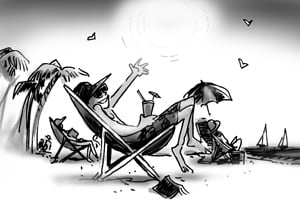Recently, we have added the “industry focus” section to economy.id. This highlights some extra datasets on specific industries which aren’t well represented in the rest of the site. They are not turned on by default, but are included where that industry is an important contributor to the economy of the area. The most recent addition to this section is the tourism module, which looks at the value and contribution of tourism and hospitality in your area, and the characteristics of workers in the industry.

The tourism industry is a slippery one to measure. Technically it consists of exports from a range of different industries – exports, because it’s only tourism if it’s being sold to people from outside your area! But knowing about tourism is important. Many areas are looking at developing a tourist industry, and it’s also really important for businesses to know the magnitude of the tourist spend in the area, in addition to locals buying your products.
The new tourism module has two sections. Firstly, we have some microsimulation data from NIEIR which estimates the size of tourism and hospitality in your area, how many people it employs and what it’s worth to your economy. These figures add up at the national level to the “Tourism Satellite Account” which is how the ABS estimates the contribution of tourism as part of the national accounts.
Take the Gold Coast for instance. The Gold Coast tourism value link shows that tourism has gross sales of $3.1b in 2011-12, and value add of about half that. It has also just picked up a bit after about 4 years of declines.

It also employs about 26,000 people, and makes up an impressive 27% of Queensland’s tourism sales, and about 5% of Australia’s.
We also have some information about the characteristics of workers in Tourism and Hospitality from the Census. Because these can’t be separated by exports, it includes all people working in tourism and hospitality related occupations – this includes those who may not be directly chasing the tourist dollar, but are employed in local restaurants for instance. Still, it gives you an idea of the characteristics of workers in those industries. There is also a list of all the individual occupations totalled here.
For instance, on the Gold Coast, tourism workers tend to be young, with 30% under the age of 25, and are 57% female, and 50% part-time workers. Although only 28% of Gold Coast’s population were born overseas, 41% of tourism and hospitality workers work, indicating that it’s a popular job choice for recent arrivals (and perhaps temporary arrivals too).
The tourism and hospitality module is available at no extra charge to any economy.id subscriber with a significant tourism economy. Please contact us if you’d like more information. Haven’t subscribed to economy.id yet? There is heaps of useful information in there to tell the economic and workforce story of your area, so please contact us to enquire about it.







.png)





